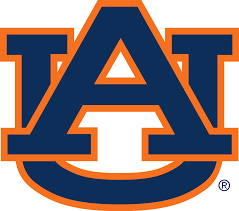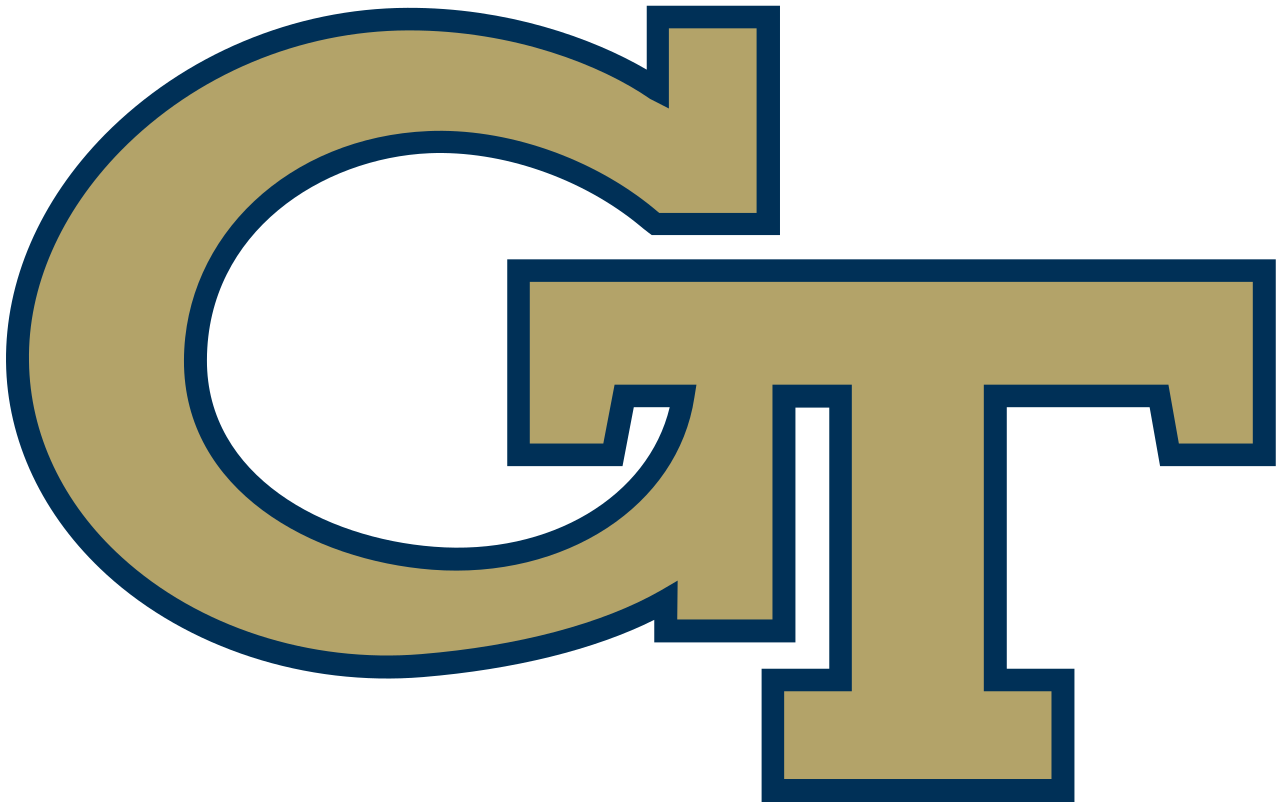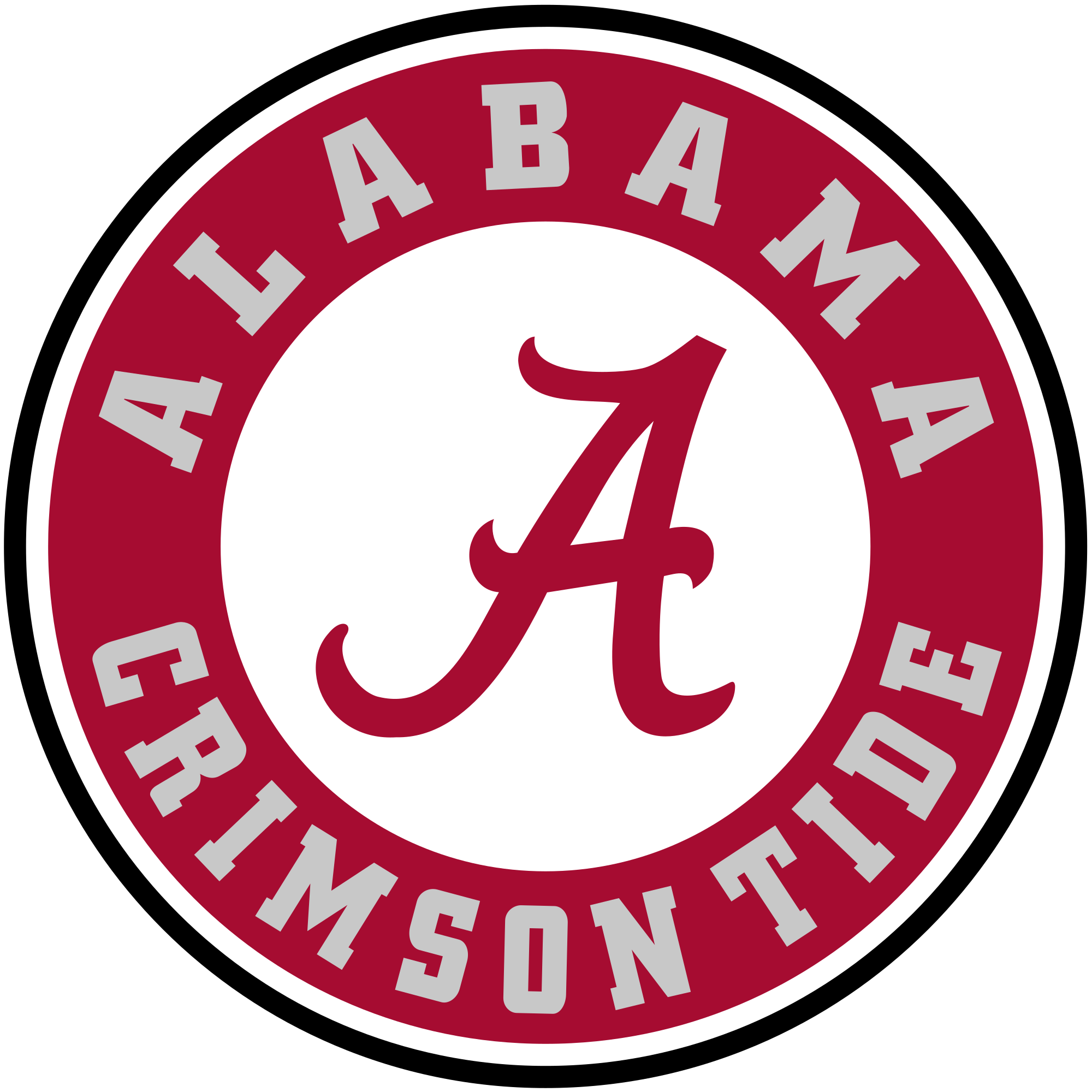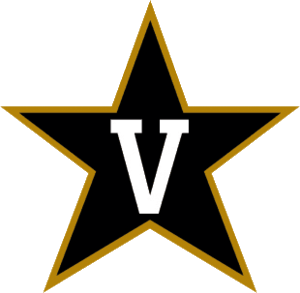BRIDGEPORT, Pa. — Among the largest geographic divisions with teams from Alabama, Georgia, South Carolina and Tennessee, the Men’s Southeast Division of Auburn University, Clemson University, the Georgia Institute of Technology, Georgia Southern University, Kennesaw State University, the University of Alabama “A”, the University of Alabama “B”, the University of Georgia, the University of Tennessee and Vanderbilt University is the focus of this week’s Collegiate Water Polo Association (CWPA) Men’s Collegiate Club Division Spotlight.
HISTORY: Formed in 2000 to encompass all programs in Alabama, Florida, Georgia, Mississippi, South Carolina, and Tennessee, the Southeast Division has seen multiple programs reach the division title game over the past 20 seasons of competition.
The division’s composition is different than the women’s Southeast Division which consists of teams from Georgia and Florida. Due to the number of men’s teams in Florida, combined with the existence of programs in Alabama, South Carolina and Tennessee, the men’s Southeast Division contains no teams from the “Sunshine State”.
However, the division is linked historically to Florida as the division’s original membership featured schools from the state. The University of Florida was the original champion of the Southeast Division as the Gators captured the 2000 and 2001 titles and hosted the Men’s National Collegiate Club Championship in 2001 while still a member of the Southeast Division. Following the 2001 season, the original Florida Division was created with the grouping lasting from 2002-to-2004. In 2005, the Florida Division folded back into the Southeast Division before being reformed in 2007.
During the second run of Florida teams in the Southeast Division, Florida notched a pair of runner-up finishes (2004, 2006), while Florida International University posted back-to-back-to-back titles in 2004, 2005 and 2006.
However, the most successful team in the Southeast Division’s history is Georgia Tech which holds six crowns (2002, 2003, 2007, 2008, 2009, 2011) and eight runner-up marks (2000, 2001, 2005, 2010, 2012, 2015, 2017, 2019). Overall, the Yellow Jackets have appeared in 14 of the 20 Southeast Division title games all-time.
Fellow “Peach State” program Georgia holds a 3-2 mark in division title games with the Bulldogs coming out as the top dog in 2010, 2013, 2015 and being leashed with runner-up finishes in 2007 and 2016.
Vanderbilt holds pairs of championships (2012, 2014) and second place finishes (2009, 2013), while Clemson (2016) and Alabama (2017, 2018, 2019) have claimed victory in their only division title game appearances.
The remaining title game appearances belong to Auburn (2002, 2003), Tennessee (2008, 2014) and former division members Emory University (2011) and the University of Mississippi (2018) as the quartet have each finished second in the division.
In the history of the Southeast Division, a member program has never reached the Men’s National Collegiate Club Championship title game.
Southeast Division Champion/Runner-Up
- 2000 – University of Florida / Georgia Institute of Technology
- 2001 – University of Florida / Georgia Institute of Technology
- 2002 – Georgia Institute of Technology / Auburn University
- 2003 – Georgia Institute of Technology / Auburn University
- 2004 – Florida International University / University of Florida
- 2005 – Florida International University / Georgia Institute of Technology
- 2006 – Florida International University / University of Florida
- 2007 – Georgia Institute of Technology / University of Georgia
- 2008 – Georgia Institute of Technology / University of Tennessee
- 2009 – Georgia Institute of Technology / Vanderbilt University
- 2010 – University of Georgia / Georgia Institute of Technology
- 2011 – Georgia Institute of Technology / Emory University
- 2012 – Vanderbilt University / Georgia Institute of Technology
- 2013 – University of Georgia / Vanderbilt University
- 2014 – Vanderbilt University / University of Tennessee
- 2015 – University of Georgia / Georgia Institute of Technology
- 2016 – Clemson University / University of Georgia
- 2017 – University of Alabama / Georgia Institute of Technology
- 2018 – University of Alabama / University of Mississippi
- 2019 – University of Alabama / Georgia Institute of Technology
THE TEAMS: During the 2019 season, the Southeast Division featured membership from Alabama (Alabama “A”, Alabama “B”, Auburn), Georgia (Georgia, Georgia Southern, Georgia Tech, Kennesaw State), South Carolina (Clemson) and Tennessee (Tennesse, Vanderbilt).
 Auburn University
Auburn University
One of two men’s collegiate club programs in the State of Alabama competing in the Collegiate Water Polo Association (CWPA) Southeast Division, the Auburn University Tigers compete as a co-ed program with players that are new or familiar with the sport.
Among a few schools in the school to consistently field a coed team, the Tigers are generally small in number, but value the close friendships that are created through the team’s mutual love for water polo.
Outside the pool, the team hosted multiple events including pasta parties, bonfires and Thursday night pizza after practice to bring players together and connect more as a team.
Team’s primary rivals are the University of Tennessee and Georgia Southern University, Key players for Auburn are Kami Grochowski, Jerrick Neu, Drew Friedman and Warren Spann.
A public university in Auburn, Alabama, Auburn has more than 24,600 undergraduate students and a total enrollment of more than 30,000 with 1,330 faculty members to ranked as the second largest university in Alabama.
Chartered on February 1, 1856, as East Alabama Male College, the school was renamed the Agricultural and Mechanical College of Alabama in 1872.. In 1892, it became the first four-year coeducational school in Alabama, and in 1899 was renamed Alabama Polytechnic Institute (API) to reflect its changing mission. In 1960, its name was changed to Auburn University to acknowledge the varied academic programs and larger curriculum of a major university.
The school’s academic programs are among the best in the nation:
- The undergraduate Interior Design program in the College of Human Sciences is ranked No. 1 nationally by DesignIntelligence magazine. For its annual survey, “America’s Best Architecture & Design Schools,” the publication asked 277 leading architecture and design firms which schools best prepare students for success in the profession. Based on Interior Design programs accredited by the Council for Interior Design Accreditation (CIDA), Auburn was ranked No. 1 in the nation, along with Savannah College of Art and Design.
- Auburn’s College of Architecture pioneered the nation’s first interior architecture degree program; its dual degree Architecture & Interior Architecture degree was the first in the nation. Its College of Architecture, Design, and Construction pioneered the nation’s first Design Build master’s degree program, capitalizing on the College’s Building Science program with Auburn’s “Rural Studio” program where Architectural students build highly creative and ingenious homes for some of the poorest regions of Alabama.
- The Samuel Ginn College of Engineering has a 134-year tradition of engineering education, consistently ranking in the nation’s largest 20 engineering programs in terms of numbers of engineers graduating annually. The college has a combined enrollment of close to 4,000. Auburn’s College of Engineering offers majors in civil, mechanical, electrical, industrial and systems engineering, polymer and fiber engineering, aerospace, agricultural, bio-systems, materials, chemical engineering, computer science, and software engineering, and—more recently—began a program in wireless engineering after receiving a donation from alumnus Samuel L. Ginn. This gave Auburn the first Bachelor of Wireless Engineering degree program in the United States. Auburn University was the first university in the Southeast to offer the bachelor of software engineering degree and the master of software engineering degree.
- Auburn’s Economics Department (formerly in the College of Business, now in the College of Liberal Arts) was ranked 123rd in the world in 1999 by the Journal of Applied Econometrics. Auburn was rated ahead of such international powerhouses as INSEAD in France (141st) and the London Business School (146th). Auburn’s MBA Program in the College of Business has annually been ranked by U.S. News & World Report magazine in the top ten percent of the nation’s more than 750 MBA Programs.
- ROTC programs are available in three branches of service: Air Force, Army, and Navy/Marine Corps with the latter being the only one in Alabama. Auburn is one of only seven universities in the Nuclear Enlisted Commissioning Program, and has historically been one of the top ROTC producers of Navy nuclear submarine officers.
- Auburn has graduated six astronauts (including T.K. Mattingly of Apollo 13 fame) and one current and one former director of the Kennedy Space Center. 1972 Auburn Mechanical Engineering graduate Jim Kennedy, currently director of NASA’s Kennedy Space Center, was previously deputy director of NASA’s Marshall Space Flight Center (MSFC). Several hundred Auburn graduates, primarily engineers and scientists, currently work directly for NASA or NASA contractors. Hundreds of Auburn engineers worked for NASA at MSFC during the peak years of the “space race” in the 1960s, when the Saturn and Apollo moon programs were in full development.
- Auburn University owns and operates the 423-acre Auburn University Regional Airport, providing flight education and fuel, maintenance, and airplane storage. The Auburn University Aviation Department is fully certified by the FAA as an Air Agency with examining authority for private, commercial, instrument, and multiengine courses. In April 2015, Auburn University received the nation’s first FAA approval to operate a new Unmanned Aircraft Systems Flight School as part of the Auburn University Aviation Center. The College of Business’s Department of Aviation Management and Supply Chain Management is the only program in the country to hold dual accreditation by the Association to Advance Collegiate Schools of Business (AACSB) and the Aviation Accreditation Board International (AABI). Created over 65 years ago, Auburn’s flight program is also the second oldest university flight program in the United States.
- The university recently began a Master of Real Estate Development program. one of the few in the Southeast. The program has filled a void of professional real estate education in Alabama.
- Modern Healthcare ranked Auburn University’s Physicians Executive M.B.A. (PEMBA) program in the College of Business ninth in the nation among all degree programs for physician executives.
For more information on the Auburn co-ed/men’s collegiate club team, contact either Kamila Grochowsi (kzg0037@auburn.edu) or Warren Spann (wss0015@auburn.edu)
- Facebook (@AUWaterPolo)
- Instagram (@auburnwaterpolo)
- Twitter (@AUWaterPolo)
Clemson University
The only collegiate club team in the state of South Carolina competing in the Collegiate Water Polo Association (CWPA), Clemson University’s team welcomes both men and women to compete for the Tigers.
The 2016 Southeast Division Champion, Clemson is a public university located in Clemson, South Carolina. Founded in 1889, Clemson is the second-largest university in student population in South Carolina with an enrollment of approximately 19,500 and 5,000 graduate students. Clemson’s 1,400-acre campus is in the foothills of the Blue Ridge Mountains and sits next to Lake Hartwell.
The school consists of seven colleges: Agriculture, Forestry and Life Sciences; Architecture, Arts and Humanities; Business; Behavioral, Social and Health Sciences; Education; Engineering, Computing and Applied Sciences; and Science.
For the Class of 2022 (enrolling Fall 2018), Clemson received 28,845 applications and accepted 13,613 (47.2%), with 3,792 enrolling.
For more information on the Clemson co-ed/men’s collegiate club team, contact Wayne Hawkins (whawki2@clemson.edu).
- Twitter (@clemsonwopoclub)
- Website (clemson.campuslabs.com/engage/organization/waterpolo)
 Georgia Institute of Technology
Georgia Institute of Technology
A six-time Southeast Division Champion (2002, 2003, 2007, 2008, 2009, 2011) and eight-time runner-up (2000, 2001, 2005, 2010, 2012, 2015, 2017, 2019), the Yellow Jackets of the Georgia Institute of Technology – also known as Georgia Tech or simply “Tech” – rate as the most successful program in the history of the men’s Southeast Division.
One of four men’s collegiate club programs located in the State of Georgia (Georgia Tech, Georgia Southern University, Kennesaw State University, University of Georgia), the school is located in Atlanta. A public research university and institute of technology, Georgia Tech is part of the University System of Georgia and has satellite campuses in Savannah, Georgia; Metz, France; Athlone, Ireland; Shenzhen, China; and Singapore.
The school was founded in 1885 as the Georgia School of Technology as part of Reconstruction plans to build an industrial economy in the post-Civil War Southern United States. Initially, it offered only a degree in mechanical engineering. By 1901, its curriculum had expanded to include electrical, civil, and chemical engineering. In 1948, the school changed its name to reflect its evolution from a trade school to a larger and more capable technical institute and research university. Today, Georgia Tech is organized into six colleges and contains about 31 departments/units, with emphasis on science and technology. It is well recognized for its degree programs in computer science and engineering.
The school is unique as unlike most similarly named universities (such as the Massachusetts Institute of Technology and the California Institute of Technology), the Georgia Institute of Technology is a public institution.
The student body consists of more than 29,000 graduate and undergraduate students, and there are around 1,740 full-time academic faculty. The student body at Georgia Tech is 69% male and 31% female.
Around 50–55% of all Georgia Tech students are residents of the state of Georgia, around 20% come from outside the U.S., and 25–30% are residents of other U.S. states or territories. The top states of origin for all non-Georgia US students are Florida, Texas, California, North Carolina, Virginia, New Jersey and Maryland. Students at Tech represent 114 countries and all 50 states.
For more information on the Georgia Tech men’s collegiate club team, contact either Philip Li (pli94@gatech.edu), Luke Brawer (lbrawer3@gatech.edu) or the team’s general account (gtmenswaterpolo@gmail.com).
- Facebook (@GTMensWaterPolo)
- Twitter (@GTWaterPolo)
Georgia Southern University
Among the newest collegiate club teams in the Collegiate Water Polo Association (CWPA), Georgia Southern University is a public university located in Statesboro, Georgia.
Founded in 1906, Georgia Southern is the fifth largest institution in the University System of Georgia and is the largest center of higher education within the southern half of Georgia. The institution offers over 140 different academic majors in a comprehensive array of baccalaureate, masters, and doctoral programs. The university has a combined enrollment of approximately 26,000 students from all 50 states and approximately 85 nations.
On the Statesboro Campus is the Center for Wildlife Education and the Lamar Q Ball, Jr. Raptor Center, an educational and research facility that is home to Georgia Southern’s bald eagle mascot as well as 85 other birds, 67 reptiles, 70 amphibians, and eight mammals. The university also manages the Effingham Wetlands, some 1,400 acres donated by the Southeastern Trust for Parks and Land (STPAL).
Georgia Southern University consists of eight primary colleges: the College of Business Administration, the College of Education, the College of Health Professions, the College of Engineering and Computing, the College of Behavioral and Social Sciences, the College of Science and Mathematics, the College of Public Health and the College of Arts and Humanities.
For more information on the Georgia Southern co-ed/men’s collegiate club team, contact Robert Pope (rp03507@georgiasouthern.edu) or the team’s general account (gsuwapo@gmail.com).
- Instagram (@gsuwapolo)
- Twitter (@gsuwapoloclub)
 Kennesaw State University
Kennesaw State University
Part of the public University System of Georgia and with primary campuses in Kennesaw and Marietta, Georgia, Kennesaw State University was founded in 1963. Present enrollment is over 37,000 students, making it the third-largest university within Georgia and one of the top 50 largest universities in the United States.
The university is divided into 13 colleges and offers 52 bachelor’s degrees, 21 master’s degree programs, one specialist degree, and five doctoral programs. The university has multiple academic programs in business, education, engineering, nursing, physical sciences, information technology, criminal justice and sports management.
Over three-quarters of the student body come from Cobb, Cherokee or Fulton Counties in Georgia, while nine percent of the student body come from over 136 countries worldwide. About 70% of undergraduates are full-time, while the figure for graduate students is 31%.
For more information on the Kennesaw State co-ed/men’s collegiate club team, contact Hannah Belinski (hannahbelinski@yahoo.com).
University of Alabama
The three-time reigning Southeast Division Champion with titles in 2017, 2018 and 2019, the University of Alabama’s roster is comprised of both men and women. Founded in the Fall of 2010, the Crimson Tide are slated to host the 2019 Men’s National Collegiate Club Championship.
Alabama, which fielded both “A” and “B” teams in the Southeast Division during the 2019 season, is a public university in Tuscaloosa, Alabama. Established in 1820, the University of Alabama is the oldest and largest of the public universities in Alabama as well as the flagship of the University of Alabama System. The university offers programs of study in 13 academic divisions leading to bachelor’s, master’s, education specialist, and doctoral degrees. The only publicly supported law school in the state is at Alabama. Other academic programs unavailable elsewhere in Alabama include doctoral programs in anthropology, communication and information sciences, metallurgical engineering, music, Romance languages and social work.
The university follows a standard academic calendar based on the semester system, which divides the academic year, starting in mid-August, into two 15-week semesters (fall and spring) and the summer. The fall semester ends in December and the spring term lasts from January to early May. The summer, which lasts from mid-May to August, is divided into a three-week “mini-semester” in May and two four-week sessions in June and July, respectively.
In fall 2019, the university received 38,505 applications for first-time freshman enrollment, from which 31,835 applications were accepted (82.7%) and 6,764 freshmen enrolled. In fall 2018, the university had an enrollment of 38,390 students, consisting of 33,028 undergraduates and 5,362 postgraduates, from all 67 Alabama counties, all 50 US states and the District of Columbia, and 78 foreign nations. Alabama residents comprised 39.8% of the undergraduate student body; out-of-state residents comprised 58.1%, and international (non-resident alien) students comprised 2.0%.
For more information on the Alabama co-ed/men’s collegiate club team, contact either Austin Pearson (alpearson1@crimson.ua.edu) or Colin Patrick (cgpatrick@crimson.ua.edu).
- Facebook (@bamawaterpolo)
- Instagram (@alabamawaterpolo)
- Twitter (@UAWaterPolo)
- Website (urec.sa.ua.edu/sport-programs/sport-clubs/water-polo/)
 University of Georgia
University of Georgia
A three-time Southeast Division Champion (2010, 2013, 2015) and two-time runner-up (2007, 2016), the Bulldogs of the University of Georgia are an annual threat to capture the division crown.
A public university with its main campus in Athens, Georgia, Georgia was founded in 1785 to rate among the oldest public universities in the United States.
Among public universities, the University of Georgia is one of the nation’s top three producers of Rhodes Scholars over the past two decades.
The university has 17 schools and colleges. In addition to the colleges and schools, the university is home to the University of Georgia/Medical College of Georgia Medical Partnership that provides education leading to the Doctor of Medicine (M.D.) degree from the University of Georgia as well as extensive facilities for medically related education and research at the University of Georgia.
Admission to the school is decided based on multiple factors including high school grades, specially considering the rigor of high school study, considers a student’s studying in a school’s “advanced” or “most difficult” curriculum, considers the taking of advanced placement, College Board Advanced Placement, International Baccalaureate, early college enrollment and other rigorous classes, considers the scores on standardized tests (SAT or ACT), considers academic and personal achievements, considers extracurricular activities, and considers personal statements.
The university has historically garnered a large applicant pool from which to choose. There were 26,448 applications for admission to the class of 2022 (enrolling fall 2018): 12,724 were admitted (48.1%) and 5,750 enrolled (an admissions yield of 45.2%) with more than 288 graduating first or second in their class (e.g. valedictorian or salutatorian) and with most enrolled students graduating within the top ten percent of their class.
In 2019, the university was tied for with Harvard University and Columbia University in U.S. News & World Report’s rankings of “Best National Universities for Undergraduate Teaching.”
As of 2019, 24 UGA students have been named Rhodes Scholars including five since 2008. Among public universities, the University of Georgia is one of the nation’s top three producers of Rhodes Scholars over the past two decades. UGA is also home to hundreds of other major scholarship winners including 128 Fulbright Scholars (tied with universities such as Stanford University), 57 Goldwater Scholars, five Gates Cambridge Scholars, four Schwarzman Scholars, three Mitchell Scholars, three Carnegie Endowment Gaither Fellows and students earning the MacArthur Fellowship (known as the “Genius Grant”).
Further, UGA is among the top-ranked American universities for the number of students studying abroad, with more than 100 programs in about 70 countries, and 25% of the student body participating in the program before graduation.
For more information on the Georgia co-ed/men’s collegiate club team, contact either Dillon Joiner (drj36366@uga.edu) or
- Facebook (@UGAWaterPolo)
University of Tennessee
A two-time Southeast Division runner-up (2008, 2014), the University of Tennessee welcomes both men and women with varying levels of experience to compete on the Volunteers club team.
A public university located in Knoxville, Tenn., and one of two Southeast Division collegiate club teams in the state along with Vanderbilt University, the school was founded in 1794 – two years before Tennessee became the 16th state.
With 10 undergraduate colleges and eleven graduate colleges, the school enrolls almost 28,000 students from all 50 states and more than 100 foreign countries. Seven of its alumni have been selected as Rhodes Scholars. James M. Buchanan, M.S. ’41, received the 1986 Nobel Prize in Economics. UT’s ties to nearby Oak Ridge National Laboratory, one of the largest government laboratories in the United States, allows for considerable research opportunities for faculty and students.
One of the oldest public universities in the United States and the oldest secular institution outside the East Coast, Tennessee is the only university in the nation to have three presidential papers editing projects as the school holds collections of the papers of all three U.S. presidents from Tennessee — Andrew Jackson, James K. Polk, and Andrew Johnson.
For Fall 2016, the school received 17,583 freshmen applications; 13,578 were admitted (77.2%) and 4,851 enrolled.
Why are the school’s orange and white with Volunteers as a macot? Charles Moore, president of the university’s athletic association, chose orange and white for the school colors on April 12, 1889. His inspiration is said to have come from orange and white daisies which grew on campus. The mascot is derived from the State of Tennessee’s moniker as the “Volunteer State” for the large number of Tennesseans who volunteered for duty in the War of 1812, the Mexican–American War, and the American Civil War.
For more information on the Tennessee co-ed/men’s collegiate club team, contact either Nate Grum (Ngrum@vols.utk.edu) or Liz Hahn (ehahn3@vols.utk.edu).
- Facebook (@UniversityOfTennesseeWaterPolo)
- Instagram (@utkwaterpolo)
- Twitter (@Vols_Polo)
- Website (utk.campuslabs.com/engage/organization/waterpolo)
 Vanderbilt University
Vanderbilt University
The 2012 and 2014 Southeast Division Champion, the Commodores of Vanderbilt University also hold a pair of runner-up finishes (2009, 2013).
The only private university in the division, Vanderbilt was founded in 1873 in Nashville, Tenn. The school is named in honor of shipping and rail magnate Cornelius Vanderbilt, who provided the school its initial $1-million endowment.
Vanderbilt enrolls approximately 13,100 students from the United States and over 100 foreign countries. Students from all 50 states and more than 100 countries attend Vanderbilt, with 68% of the total student body coming from outside the South and 10% from outside of the United States. As of 2019, the incoming class was 49% male and 51% female. Moreover, 10% of the class was classified as Hispanic, 11% Black or African American, 14.6% Asian, and 5.5% other/two or more races; 9.7% of the class is international. 88% of Vanderbilt’s students graduate in four years and 93% within six years.
Vanderbilt lets undergraduates choose among 70 majors, or create their own, in its four undergraduate schools and colleges: the College of Arts and Science, the School of Engineering, Peabody College of Education and Human Development, and Blair School of Music. The university also has six graduate and professional schools, including the Divinity School, Graduate School, Law School, School of Medicine, School of Nursing, and Owen Graduate School of Management.
The university’s undergraduate programs are highly selective: in 2019, Vanderbilt accepted 9.1% of its 37,310 freshman applicants, thus making Vanderbilt one of the most selective universities in the United States and the most selective university in the state of Tennessee. The class of 2023 included 231 National Merit Scholars and 116 valedictorians or salutatorians.
For more information on the Vanderbilt men’s collegiate club team, contact either Matthew Millad (vandymenspolo@gmail.com) or Jack O’Halloran (jmohalloran99@gmail.com).
- Facebook (@Vanderbilt-Club-Water-Polo)
- Twitter (@VandyWaterPolo)
- Website (vanderbilt.campuslabs.com/engage/organization/mensclubwaterpolo)
NEED MORE INFORMATION?: The Collegiate Water Polo Association publishes additional information for the collegiate club teams under the Membership tab at the top of the page. CLICK HERE to review the men’s collegiate club programs’ contact information.




